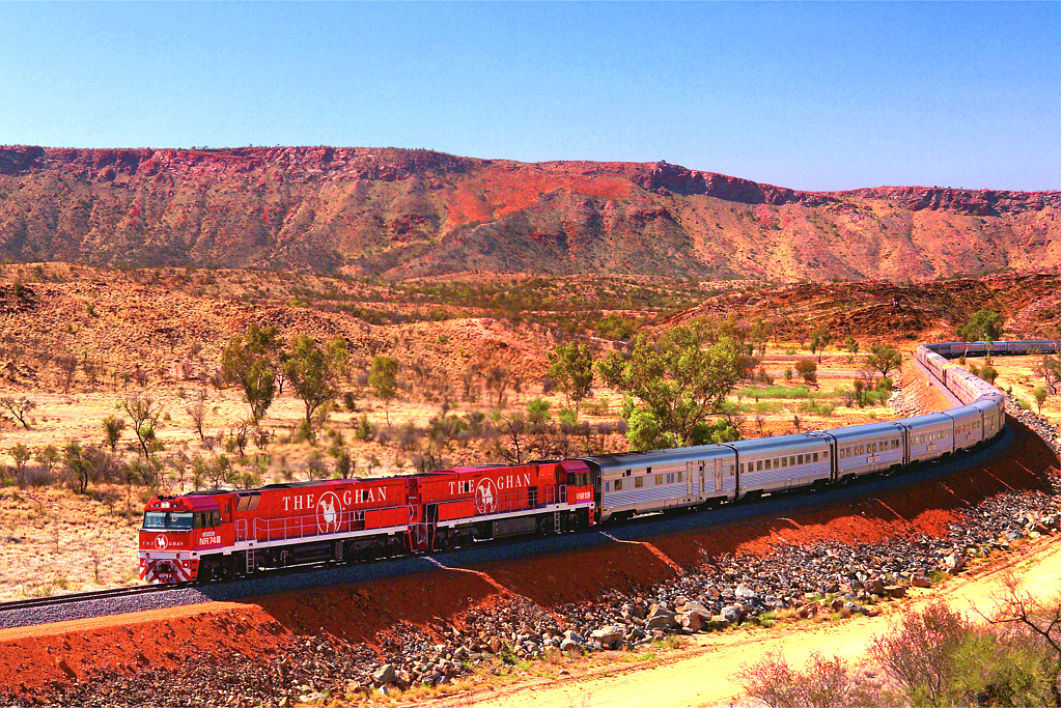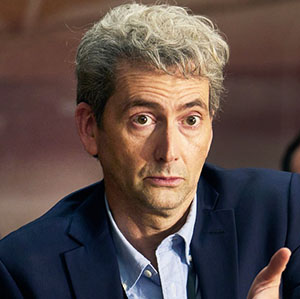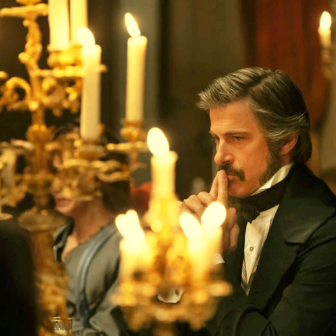“The soul travels at the speed of a camel,” according to a traditional Arab saying. So it’s appropriate that SBS’s first experiment in “slow TV” is a seventeen-hour documentary following the journey of The Ghan, the Great Southern Rail train drawn from Adelaide to Darwin by a glossy red engine bearing the image of a camel.
Named after the cameleers of the late nineteenth century — known as “Ghans” on the erroneous assumption that they were all from Afghanistan — The Ghan takes fifty-four hours to cover a journey of close to 3000 kilometres at an average speed of eight-five kilometres per hour. That’s slower than car travel on the Stuart Highway, where the speed limits are 130 kilometres per hour, though once it’s compressed into seventeen hours the journey by television takes only a third of that time.
One of the paradoxes of slow TV, which was pioneered in 2009 in a minute-by-minute Norwegian documentary on the seven-hour train journey from Bergen to Oslo, is its economies with time. You don’t watch people sleeping through the overnight stretches on The Ghan. You don’t have to bother booking tickets, getting to the station, manhandling luggage. The core experience is lifted out for you, in one clean stretch. Activities in the physical world are so much messier. They leak into time zones of preparation and aftermath.
The Ghan is considerably faster than a camel, which can reach speeds of around sixty-five kilometres per hour, but the televised journey evokes the immersive experience of that mode of travel, a kind of landscape dreaming in which the rider is lulled by the steady, rhythmic sway into a state bordering on hypnosis.
Not that everyone is soothed. Reactions to SBS’s 7 January screening of a preliminary three-hour version, with the hashtag #TheGhan, quickly became a stand-off between the bored and the mesmerised. The entranced reported switching on out of curiosity and finding themselves still watching two hours later, so fixated they couldn’t get up to make a cup of coffee for fear of missing something. The bored tried to stir outrage with complaints about minority-appeal experiments on taxpayer-funded TV. Many declared they were cancelling plans to make the real journey.
The entranced seem to have won out by a considerable margin. Viewing figures for the preview version were strong enough to justify showing the full-length documentary last weekend, from 2.40 on Sunday morning till 8.40 in the evening. One tweeter reported that he had persuaded his local pub to devote one of its screens to The Ghan and it had proved more of a draw than the football. As for the bored… well, one of the rules of a human experiment like this is that participants are free to leave at any time.
A word of caution, though, to those who may be rushing to make a booking on The Ghan. This is not, as some of the more disaffected viewers reported, an attempt to portray the experience of making the trip. It is not a travelogue or a tourist account. Apart from a few brief appearances by the drivers in their cabin offering easygoing commentary, we are not invited to connect with anyone on the journey. Interior shots of the corridor or dining car pick up the comings and goings of passengers like figures on a Kubrick spaceship, their talk almost inaudible on the muted soundtrack.
According to writer/producer Dan Whelan, the aim was “to make the train a character in the documentary.” Perhaps there is some affinity between the train and the human psyche, and The Ghan might be best described as a journey in consciousness. That may sound esoteric, but the immersive effect is so effortless, as so many viewers reported, that it can catch you by surprise.
The cameras provide shots from a range of positions in or around the train, on the tracks or from a helicopter circling overhead, maintaining the perspective long enough for the mesmeric effect to work. After two minutes and fifty seconds following an unbroken stretch of flat scrubby landscape on the right side of a rear carriage, there is a switch to the left side, where there is a new visual element: the shadow of the train. Any new element has the effect of putting you on the alert again, and in some instances the effect is dramatic. We cut to a shot from the rail tracks. A tiny insect flits around the lens of the camera. Then the train heaves into view and we watch as it rumbles over, all 900 metres of it.
For minds habituated to a blitz of visual and aural information throughout waking hours, there’s a luxury about the absence of any demand for filtering and sorting of material. It’s all done for you in the editing room, with a remarkably sure instinct for the natural rhythms of attention.
There is no voiceover. Information is provided as on-screen text, almost as part of the landscape. Here we’re crossing Goyder’s Line, marked out in 1874 as a warning to farmers not to push into land unfit for cultivation. In recent decades, Goyder’s Line has been moving steadily south. A bit further north, on the approach to Port Augusta, captions report that 124 camels and thirty cameleers arrived here in 1865. A superimposed black-and-white photo shows a lone camel suspended from a crane above a boat. As you get deeper into the journey, you are engaged in a form of time travel.
Shots from the front of the engine, often held for several minutes, lure the eye along the converging lines of the tracks to a vanishing point on the horizon. But however fast you go, the vanishing point will always be further off. Are we getting somewhere or going nowhere? Either prospect is inviting. Somehow, the forward drive of the train and the arbitrary peripheral moves of the camera echo the way the mind itself works.
Slow TV is a wonderful antidote to all the things that annoy you most about regular TV. It’s not for everyone, and maybe not for most of us, most of the time, but I hope we see more of it. Perhaps, as life in the real world goes off the rails in all directions, what we need is a slow TV channel, showing an unending stream of quietly uneventful journeys. ●




